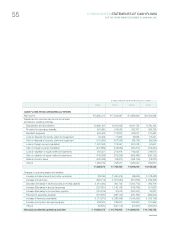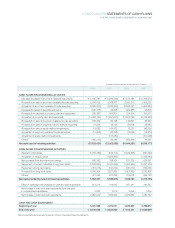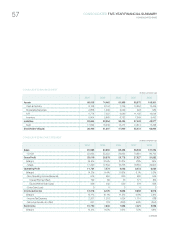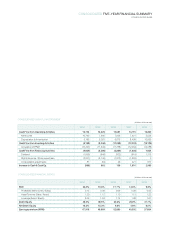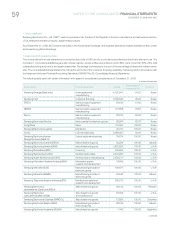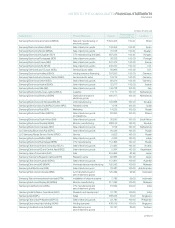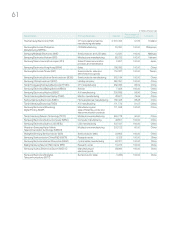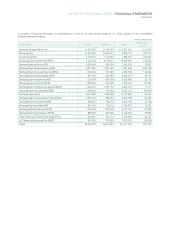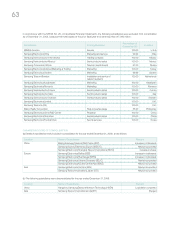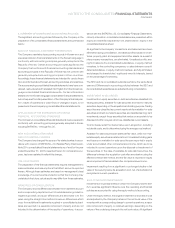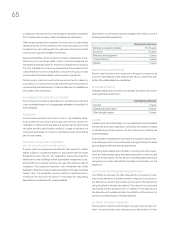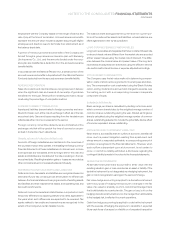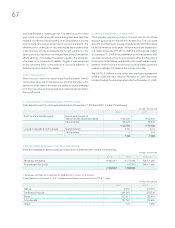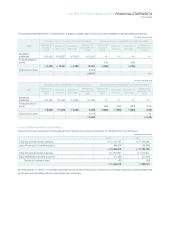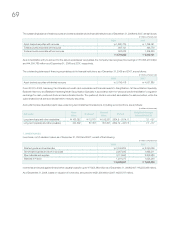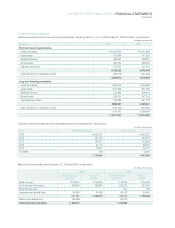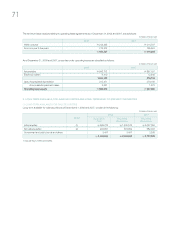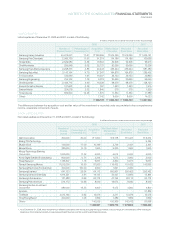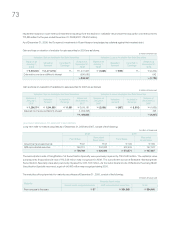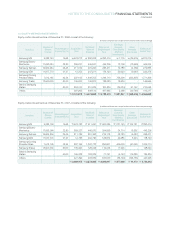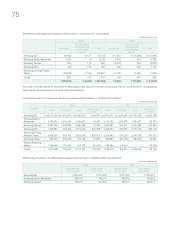Samsung 2008 Annual Report Download - page 67
Download and view the complete annual report
Please find page 67 of the 2008 Samsung annual report below. You can navigate through the pages in the report by either clicking on the pages listed below, or by using the keyword search tool below to find specific information within the annual report.
unrealized profits arising from intercompany transactions between
the Company and its equity-method investees are eliminated.
Differences between the investment amounts and corresponding
capital amounts of the investees at the date of acquisition of the
investment are recorded as part of investments and are amortized
over five years using the straight-line method.
Assets and liabilities of the Company’s foreign investees are trans-
lated at current exchange rates, while income and expense are
translated at average rates for the period. Adjustments resulting
from the translation process are reported as accumulated other
comprehensive income in a separate component of equity, and are
not included in the determination of the results of operations.
Certain equity-method investments are accounted for based on
unaudited or unreviewed financial statements as the audited or
reviewed financial statements of these entities are not available as
of the date of this audit report.
ALLOWANCE FOR DOUBTFUL ACCOUNTS
The Company provides an allowance for doubtful accounts and
notes receivable based on the aggregate estimated collectibility of
the receivables.
INVENTORY
Inventories are stated at the lower of cost or net realizable value.
Cost is determined using the average cost method, except for
materials-in-transit which are stated at actual cost as determined
using the specific identification method. Losses on valuation of
inventories and losses on inventory obsolescence are recorded as
part of cost of sales.
PROPERTY, PLANT AND EQUIPMENT,
NET OF ACCUMULATED DEPRECIATION
Property, plant and equipment are stated at cost, except for certain
assets subject to upward revaluation in accordance with the Asset
Revaluation Law of Korea. The revaluation presents production
facilities and other buildings at their depreciated replacement cost,
and land at the prevailing market price, as of the effective date of
revaluation. The revaluation increment, net of revaluation tax, is first
applied to offset accumulated deficit and deferred foreign exchange
losses, if any. The remainder may be credited to capital surplus or
transferred to raise common stock. A new basis for calculating
depreciation is established for revalued assets.
Depreciation is computed using the straight-line method over the
following estimated useful lives:
MAINTENANCE AND REPAIRS
Routine maintenance and repairs are charged to expense as
incurred. Expenditures which enhance the value or extend the use-
ful life of the related asset are capitalized.
INTANGIBLE ASSETS
Intangible assets are amortized on a straight-line basis over the fol-
lowing estimated useful lives:
LEASES
A lease which has substantially non-cancelable terms and transfers
the benefits and risks incidental to ownership from lessor to lessee
is classified as a finance lease. All other leases are classified as
operating leases.
Finance lease receivables are recorded at the present value of mini-
mum lease payments. Accrued interest is recognized over the lease
period using the effective interest rate method.
Operating lease assets are included in property, plant and equip-
ment and depreciated using the same depreciation method used
for other similar assets. Revenues from operating lease assets are
recognized on a basis that reflects the patterns of benefits over the
lease term.
DISCOUNTS AND PREMIUMS ON DEBENTURES
The difference between the face value and the proceeds on issu-
ance of the debenture is treated as either a discount or premium on
the debenture, which is amortized over the term of the debenture
using the effective interest rate method. The discount or premium is
reported as a direct deduction from or addition to the face value of
the debenture in the balance sheet. Amortization of the discount or
premium is treated as part of interest expense.
ACCRUED SEVERANCE BENEFITS
Employees and directors with at least one year of service are enti-
tled to receive a lump-sum payment upon termination of their
Estimated useful lives
Buildings and auxiliary facilities 15, 30 years
Structures 15 years
Machinery and equipment 5 years
Tools and fixtures 5 years
Vehicles 5 years
Estimated useful lives
Goodwill 5 years
Intellectual property rights 10 years
Other intangible assets 5 years


